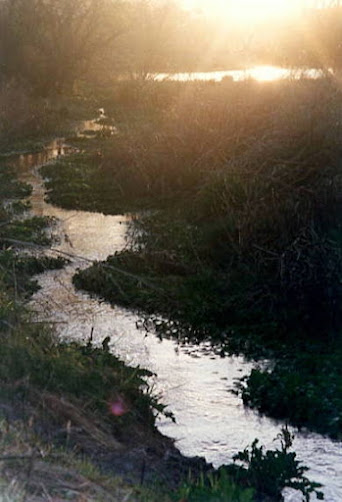Insect Heroes
 |
| When a ladybug lands on you, it's good luck in many ways! |
Out
of all the insect species in the world, 99% of them are either beneficial
(they pollinate plants and/or prey on mosquitoes, aphids, etc.) or benign
(they do no harm, but are not known to be beneficial) That means only 1% of the
insect species on our planet actually do damage our plants or to our health,
yet that tiny fraction has caused almost all insects to be labeled “pests”.
In reality, insects are some of the most important and beneficial wildlife on earth, for all these reasons:
- 90% of all flowering food crops
rely on pollination by insects, birds, or bats;
- European Honeybees are the most well-known pollinators, but research at Cornell has shown that native bees, such as Bumblebees and Solitary Bees, are 3 times better at pollination than honeybees, because they primarily gather flower pollen to take back to their nests, and honeybees are mostly interested in gathering flower nectar to take back to their hive.
 |
| Tiny but a powerful pollinator! |
- Some bees are barely the size of a grain of rice, such as this solitary bee. It's pollinating a Fleabane flower, which is only an inch in diameter.
- Bees and butterflies are the most well-known pollinators, but wasps, ants, flies, midges, moths, mosquitoes, and beetles are important pollinators too!
 |
| Soldier Beetle larvae, hungry for aphids! |
- Insects that prey on aphids, mealybugs, scale, mites, leafhoppers and other common garden pests are plentiful in the natural world. The ladybug is the most well-known, but there are many more species, including lacewings, hover flies, ground beetles, assassin and pirate bugs, dragonflies, and soldier beetles.
 |
| Braconid Wasp laying eggs on a gypsy moth caterpillar |
- North America is home to nearly 2,000 different species of braconid wasps, a tiny, non-stinging insect that lays its eggs on a host, and then its tiny, maggot-like larvae feed on the prey from the inside out, sometimes leaving just an empty skin behind. Their favorite hosts include tomato hornworm, tent caterpillar, aphids, cabbageworm, and leaf miners.
Wait
a minute! This sure makes it sound
like most insects are actually heroes and not villains! And I’m here to say that one of the best
things I’ve learned in my 40 years of organic gardening is how to put out the
welcome mat for insect heroes. In
fact, I believe that that the more insects of all kinds that you have in your
garden, the better!
#1.
If you are using any broad-spectrum insecticides on your plants and/or soil,
stop now.
#2.
If you build it they will come! No
need to become a honeybee keeper, just leave the following in your garden, or
in perimeter areas of your property.
- Some bare soil for bees that make their home in ground nests or burrows;
- Some hollow-stemmed plant debris, logs, dead tree snags, etc. Many pest-eating beneficial insects will also overwinter in these debris piles.
- Build a “bee hotel” for Orchard Mason Bees and other solitary bees to lay eggs in.
 |
| Blanket Flower grows well in Arivaca and Seattle! |
Plant Family
|
Common members
|
Attributes
|
Umbelliferae Family
|
Dill, Bronze Fennel, Parsley, Cilantro,
etc.
|
The easy-access nectar in their
flat, wide flowers attracts bees, lady beetles, soldier beetles, and
lacewings.
|
Asteracea Family
|
Yarrow, Blanket Flower, Fall Aster,
Black-Eyed Susan, Calendula, Marigold, Cosmos
|
Another wide, flat flower that
attracts many species of butterflies, skippers, and syrphid flies, as well as
all the insects listed above.
These top 2 are “must have” families for attracting beneficial
insects.
|
Lamiaceae Family*
|
Oregano, Marjoram, Mint, Lavender, etc.
|
Nectar feeds bees and butterflies.
(always grow mint in a container)
|
Brassicacea Family
|
Sweet Alyssum, Candytuft, Mustard, etc.
|
Nectar feeds bees, butterflies,
and lady beetles.
|
All the plants listed above are
low water use once established.
An asterisk* indicates plants
that also are very attractive to hummingbirds.
|
||
Resources for learning more:
- Beneficial Insect Guide: https://hazwastehelp.org/ChemToxPesticides/goodbug.aspx
- Insect identification help: www.whatsthatbug.com
- Bee houses: https://www.almanac.com/content/bee-houses-solitary-bees
Information sources I researched for this post:
- https://www.thoughtco.com/insect-pollinators-that-arent-bees-or-butterflies-1967996
- http://news.cornell.edu/stories/2011/10/native-bees-are-better-pollinators-honeybees
- https://homeguides.sfgate.com/mosquitoes-pollinate-flowers-61115.html
- https://www.motherearthnews.com/organic-gardening/pest-control/beneficial-insects-braconid-wasps-zw0z1301zkin
Photo credits:
Ladybugs bringing luck to nature campers by Emily Bishton
Sunflower with honeybee by Jon Bishton
Solitary Bee on Fleabane by Emily Bishton
Soldier Beetle larvae by Tom Mur
Orchard Mason Bee house by Emily Bishton




